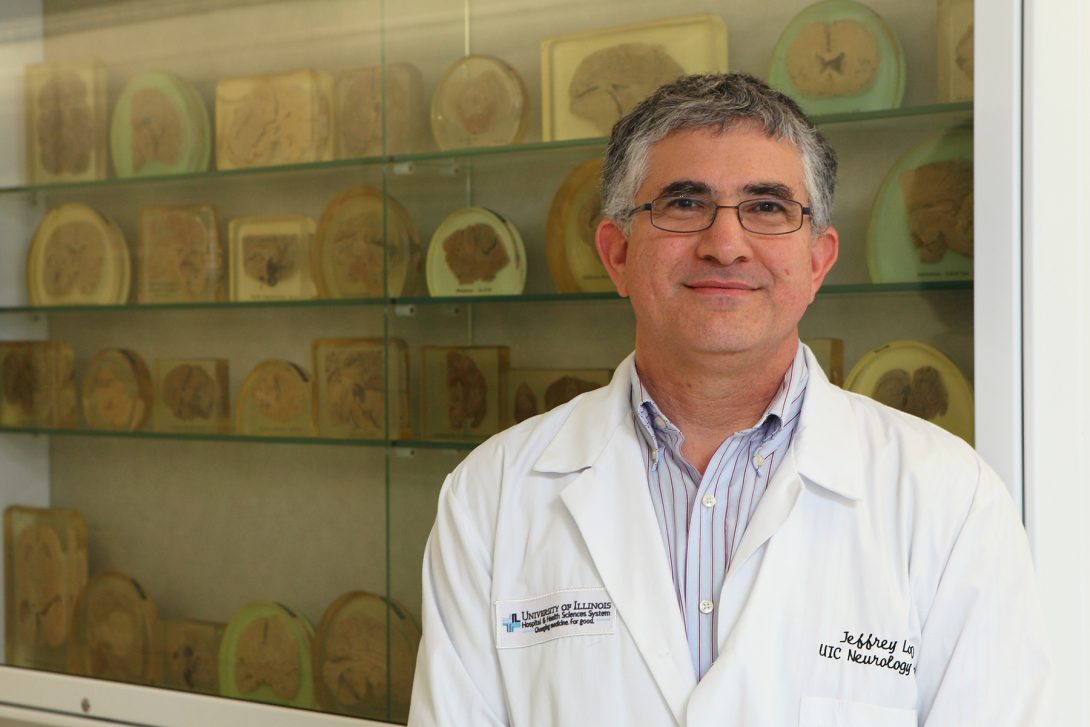Rare Disease Day: Spotlight on Dr. Jeffrey Loeb
story Heading link

In recognition of Rare Disease Day, we are shining a spotlight on Dr. Jeffrey Loeb, the John S. Garvin Endowed Chair in Neurology, professor and head of neurology and rehabilitation in the UIC College of Medicine, and director of the CCTS Biomedical Informatics Core, who combines his interests in basic and translational science with big data to advance the care of those with rare neurological diseases.
Dr. Loeb’s laboratory both examines the developing nervous system and collects human tissue samples through the UI NeuroRepository as a means to understand human neurological diseases and develop novel treatments. Using a Big Data approach that combines clinical, electrical imaging, histology, and -omic studies, he has made a number of important discoveries, some of which have translated into patented treatments and diagnostic tools for diseases including epilepsy.
His efforts to translate basic discoveries from nervous system development into new treatments resulted in a patented drug that blocks neuregulin signaling and shows promise in degenerative diseases that block neural inflammation, such as Amyotrophic Lateral Sclerosis (ALS), often referred to as Lou Gehrig’s Disease.
More recently, Loeb and his colleagues found that a nerve injury could trigger ALS-like symptoms in an animal model of the disease.
“Our results show that a single nerve injury, which is small enough that it only causes temporary weakness in normal animals, can start a cascade of inflammation in the spinal cord that initiates and causes the disease to spread in genetically-susceptible animals,” said Loeb. “The ability to precipitate the disease through injury gives us a new animal model we can use to identify treatments for ALS that focus on stopping the spread of the disease after it first starts.”
Dr. Loeb is also leading a study combining a big data analysis of clinical symptoms, MRI signals up and down the spinal cord, together with human ALS tissue histology and genomics in an effort to identify reliable markers of disease progression for clinical trials as well as new, effective treatments.
As part of the BVMC (Brain Vascular Malformation Consortium), he leads a multisite NIH RDCRN sponsored study to identify biomarkers and therapeutic strategies as well as to become clinical trial ready for patients with a rare disorder called Sturge-Weber Syndrome that affects the skin (port wine stain), the eye (glaucoma), and the brain (leptomenigeal angiomas).
Dr. Loeb emphasized the importance of building multi-site and multidimensional datasets for rare disorders.
“Patients with Sturge-Weber Syndrome not only have to live with a port-wine stain on their face, but have to go through life with an unpredictable clinical course that can include blindness, seizures, headaches, and stroke-like episodes. By bringing together physicians and families from all over the US in conjunction with the Sturge-Weber Foundation, we are building a multimodal database of clinical data and brain imaging to understand the natural history of this rare disorder. This will enable us to inform our patients what lies ahead what to expect, develop a better understanding of how the underlying pathophysiology translates into clinical symptoms, and suggest existing and new treatments that would not be possible without such a consortium.”